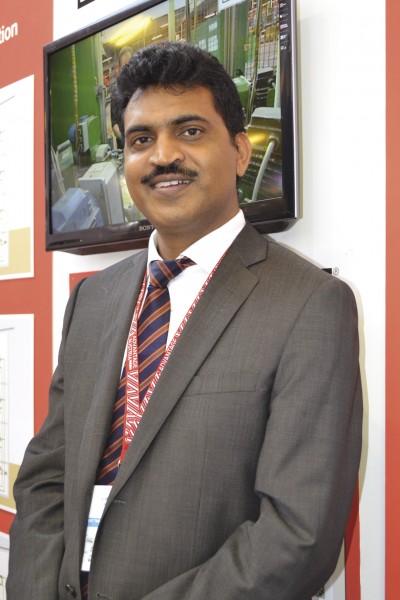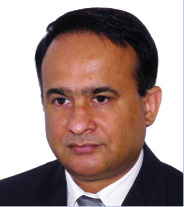The ‘cost is everything’ mentality continues to plague the valves industry in the region, but manufacturers insist a long-drawn-out strategy of building awareness will turn the tide in favour of quality and reliable performance.

Vijay Dhutale, Divisional Manager at Herz Middle East FZE
The growing real estate and construction sectors in the Middle East represent good news for the HVAC industry. Vijay Dhutale, the Divisional Manager at Herz Middle East FZE, quoting research results by the Building Services Research and Information Association (BSRIA), a UK-based research and consultancy organisation, says the HVAC market is expected to grow annually by 6%-12% in the Middle East from 2011-2015. This essentially translates to good news for manufacturers and suppliers of valves.
It’s raining valves
Besides the growth triggered by the construction and real-estate sector, there is a conscious push by the UAE government, with the Dubai Supreme Council of Energy (DSCoE) in 2011 launching the Dubai Integrated Energy Strategy 2030, which aims to reduce energy demand in the Emirate by 30% by 2030. As per the DSCoE, one of the strategic pillars to achieve the 30% savings is District Cooling. Dhutale adds that the major thrust is towards energy efficiency, which opens the doors to technologies that can lower power consumption.

Zulfiqar Mooraj, Managing Director of Samson Controls FZE
So where do valves fit into all the momentum? In an article, titled Getting Invalved, which appeared in the August 2012 issue of Climate Control Middle East, the author, Zulfiqar Mooraj elaborated on the importance of hydraulic balancing to ensure that all consumer sub-circuits received sufficient chilled water. Mooraj is the Managing Director of Samson Controls FZE.
In order to reduce capital and operating costs to a minimum, Mooraj wrote in the article, it was important to make sure that cooling systems operated at optimum efficiency. He went on to enumerate some important factors to achieve the ideal:
• Selecting system components, such as pipes, pumps, chillers and control valves so that they are adequate but not oversized for their particular loads
• Incorporating variable output pumping arrangements, which enable energy savings, when the system demand is below maximum design values
• Ensuring that the distribution network is correctly balanced at all times, especially under varying load conditions
• Limiting differential pressures (circulating heads) in sub-circuits to levels, which allow temperature control valves to provide modulating control at all times.
Energy efficiency, Mooraj wrote, could be achieved by selecting the appropriate components and instruments that are fine-tuned to provide optimum results. Picking up from where Mooraj left, Dhutale reiterates the criticality of hydronic balancing. “If the system is not balanced properly, you will notice that in some high-rise buildings, some places are cool and some places are warm,” Dhutale says. “Thus, balancing plays a major role.”
Obstacles
Despite industry players specifying the importance of control valves, for instance, customers, for a large part, continue to unshakeably lean towards lower costs when taking buying decisions. And lower costs come at a price – a strong likelihood of compromising on the quality.
In an interview with Climate Control Middle East (September 2013 issue), Ramakrishnan Bethoor, the Product Manager at Econosto and Ozten Ismail Serhan, the Sales Manager at Danfoss, spoke in elaborate fashion on the prickly issue of low-cost valves. Serhan spoke of how developers preferred not to spend too much on valves, because they were not “exposed” or seen, unlike a nice frame, fancy tap or a shiny door. Bethoor spoke of the stiff competition from low-cost valve manufacturers as the foremost challenge for his company.
The low-cost mentality of 2013 is intact in 2015. Mooraj points to how, to this day, customers prefer to buy low-cost valves to save money, which from a lifecycle perspective is an incorrect decision. “Definitely, cost of investment is important, but the savings that are generated over a period of time by having good controls, will supersede the savings that you will have by reducing your cost of investment,” he says.
In addition to the bane of the low-cost culture, Mooraj talks of time pressure as the scourge of the valves industry. He implies that manufacturers and suppliers are under constant pressure to deliver on unreasonable project delivery deadlines. “One of the big challenges that we face is when things need to be done in a hurry,” he says. “The cost of resolving a problem is much higher than the cost of doing it right the first time.”
The solutions to the cost and time conundrum are not easy to come by. Building a culture of better awareness and solidarity is one answer, though. “From a District Cooling plant to the building owner, they all should have the same interest in reducing the cost and increasing efficiency,” he says. “All stakeholders need to work together.”
Copyright © 2006-2025 - CPI Industry. All rights reserved.